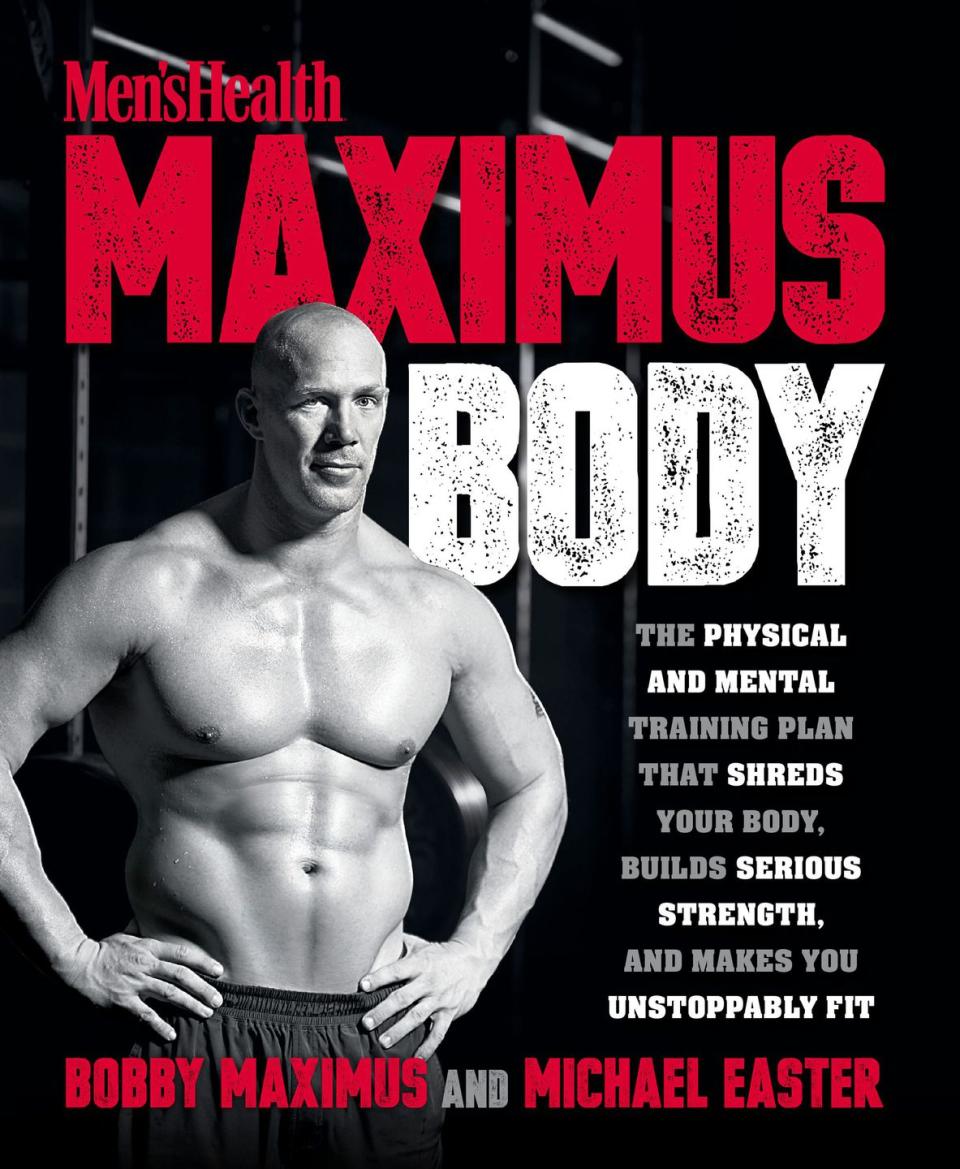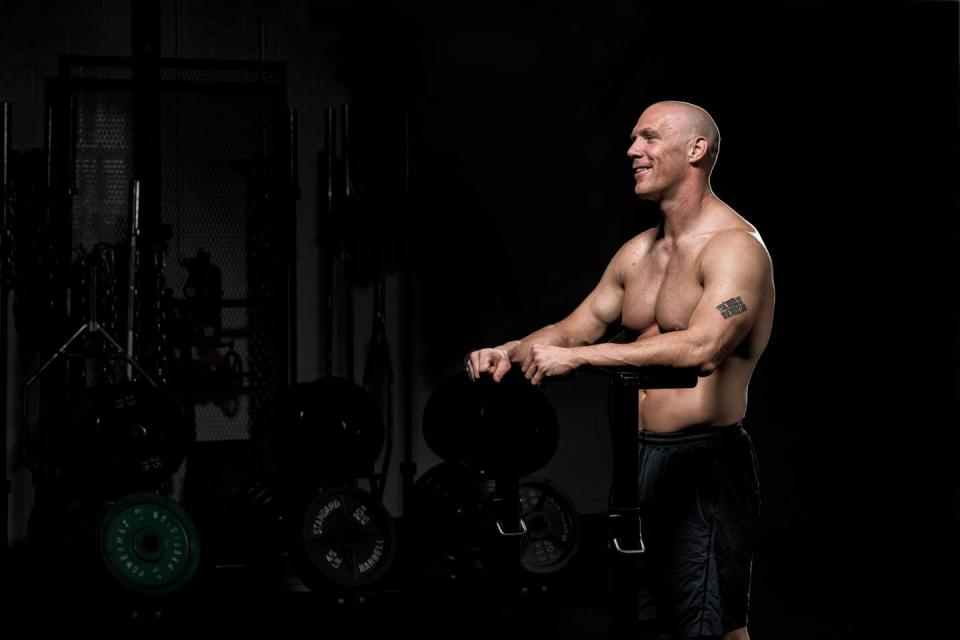How I Adjusted My Workout to Keep Training Hard After 40

Getting older doesn’t mean you have to stop training or that you have to give up on your current level of fitness. There are numerous examples of people who’ve been able to maintain a high level of fitness into their “later” years.
I’ve been able to maintain my fitness despite being told for years that I would fall off:
“Just wait until you hit 30. Things will change”
“Hit 35 and you’ll start to fall apart.
“40 is a game changer. You’ll lose everything”
It’s all bullshit.
Well, maybe not all bullshit.
Things have changed over the years. As I’ve aged, it’s become easier to get injured, I don’t recover the same from hard workouts, and muscle soreness is a much bigger problem after difficult training sessions. In order to "stay on the bus," I’ve had to eliminate certain moves from my program. I’ve also had to make alterations to other moves.
If you’re an “aged athlete” and looking to still make progress I’d suggest making some changes to the following exercises.
Want more workouts like this? Check out the Men's Health Maximus Body book, which is filled with no-nonsense muscle building routines.

The Back Squat
No more “Heavy Lifting”,
Every time you red line your body or push your absolute limit, the risk of injury goes through the roof. This becomes especially true as you age. It’s why I rarely max out on squats anymore.
Does it feel good to squat heavy? Hell yes it does-but you know what doesn’t feel good? Blowing my back out.
One of my main goals in training is to be better at life. I want to be better at my job, look better, feel better, and be a better dad and husband. If I get hurt, I can’t get better at those things. If I get hurt, I’ll actually suck at those things. Have you ever hurt your back? It’s a miserable experience. Anyone who has hurt their back will tell you the same.
When it comes to the squat I follow a simple rule. I never lift over 75 percent of my 1RM. Why 75 percent? It’s the number I find that most people’s form starts to break down and the risk of injury increases exponentially. In my opinion, unless you’re a competitive powerlifter here’s really no real reason to go beyond this number.
To replace the heavy lifting. I will do a workout every 1 to 2 weeks in which I lift 4 to 5 single reps at 70 to 75 percent 1RM (resting 3 to 4 minutes between sets). By doing this instead of lifting as heavy as I can, I ensure I can continue to build strength and protect my back against injury.
Deadlifts
More light weight, high-rep lifting
I used to do a lot of heavy-weight, low-rep lifting, but as I have gotten older I’ve done the opposite switching to a light weight, high-rep format.
When it comes to the deadlift, using lighter weights and higher reps helps strengthen the lower back-which is especially important to the aged athlete.
One of my favorite formats that I have used in place of traditional heavy lifting is:
3x20 Deadlift at 30 percent 1RM
3x20 Deadlift at 30 percent 1RM from a 4-inch deficit (i.e. standing on some plates or a platform)
Note that this workout is not easy. It may seem like a relatively light weight but doing deadlifts in sets of 20 reps-especially from a deficit-will tax your lower back, hamstrings, and grip in ways you have probably not felt before.
Doing this once a week is one of my “secret” ways to avoid injury. I haven’t been hurt in years in the gym thanks to this preventative-style workout.
The Pullup
No more chinups, lots more neutral grip
No more chinups, ever. That’s the grip where your hands face you on a straight bar. To me, it places far too much stress on the elbows. I believe it's one of the main causes of elbow injuries and tendonitis in the gym.
I also limit wide-grip pullups. I have almost eliminated them from my program-however I will do them on occasion (for example if I am traveling and the local gym or hotel only has a straight bar). The vast majority of my pull-ups are now done using a neutral grip, with my hands close together and facing one another. The wider your grip, the more stress you place on your shoulders. This becomes more true if your hands are facing away from you.
At my age, my shoulders have already seen a lifetime of wear and tear. By using the neutral grip for pull-ups I can limit further damage to the shoulders and ensure they stay in proper working order.
Behind the Neck Press
Never
The behind-the-neck press isn’t inherently bad. The exercise can be beneficial to build shoulder strength. That said, it can be a problem for aged athletes.
The position of the shoulders when performing the behind the neck press can highlight any pre-existing shoulder issues that an athlete my have. It may also lead to injury if an athlete has any issues with shoulder mobility in general.

Let’s face it: Most aged athletes have issues in both these areas. I’ve worked with numerous athletes, both amateur and professional, and almost every one of them at some point has had a shoulder injury, and most need work with shoulder mobility. By the time they hit 40-years-old their shoulders are already compromised and need special care and attention.
I replaced the behind the neck press with light dumbbell overhead presses instead.
My workout of choice instead is 4 sets of 30 seconds of work, 30 seconds of “rest” using a pair of 10 to 15 pound dumbbells. During the work intervals I perform the exercise. During the “rest” portion, I hold the dumbbells with my arms fully straightened overhead.
Every time I do an upper body workout I will do 2 to 3 sets of this 4-minute interval workout. This work is safe to do, and strengthens the three heads of deltoids.
('You Might Also Like',)

